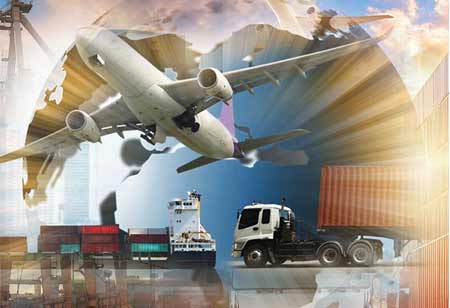THANK YOU FOR SUBSCRIBING
THANK YOU FOR SUBSCRIBING

By
Logistics Transportation Review | Wednesday, December 28, 2022
Stay ahead of the industry with exclusive feature stories on the top companies, expert insights and the latest news delivered straight to your inbox. Subscribe today.
Products and sales goals can influence how a company chooses to distribute its goods; that's why picking the best channel for distribution is so important.
FREMONT, CA: A distribution channel is a path that goods or service takes from where it is produced or manufactured to where the end-user purchases them. Distribution routes can vary, but in most cases, they consist of a producer, a wholesaler, a retailer, and the ultimate purchaser or customer. A distribution channel can show the movement of money from the purchasers to the initial point of sale or the manufacturer of the good or service. It is of the utmost importance for manufacturers to develop a marketing mix that includes a variety of distribution channels that make it possible to offer consumers the convenience of access to the product they are purchasing.
The diversity of a manufacturing business, or any other company in the distribution process, requires that the respective business settles on a channel that allows for good sales generation and easy access for consumers. The decision must make before the distribution process can begin. Bringing a product or service to market and making it accessible to customers is the goal of any company that sells goods or provides services. It can accomplish by establishing a distribution path or channel. Intermediaries, including wholesalers, merchants, or brokers, typically stand in the way of direct consumer interaction with manufacturers.
Natural beings and businesses have the potential to act as mediators. How products are sold and where they get positioned in their respective marketplaces are both influenced by distribution channels. In an ideal world, distributions would get organized in such a way as to reduce the total number of stops a product or service would have to go through before reaching the final customer. A distribution route must be functional and efficient, and all transportation and logistics requirements must be met at the most feasible capacity and cost-effective rates imaginable.
With the explosive growth of the e-commerce industry over the past couple of decades, businesses that produce and manufacture things can now sell those goods through online marketplaces. Service providers can benefit greatly from using the internet. A manufacturer's distribution channels can change based on the kind of product they make and the sales volume they want to achieve. Picking the appropriate route for distribution is of the utmost importance.
I agree We use cookies on this website to enhance your user experience. By clicking any link on this page you are giving your consent for us to set cookies. More info





